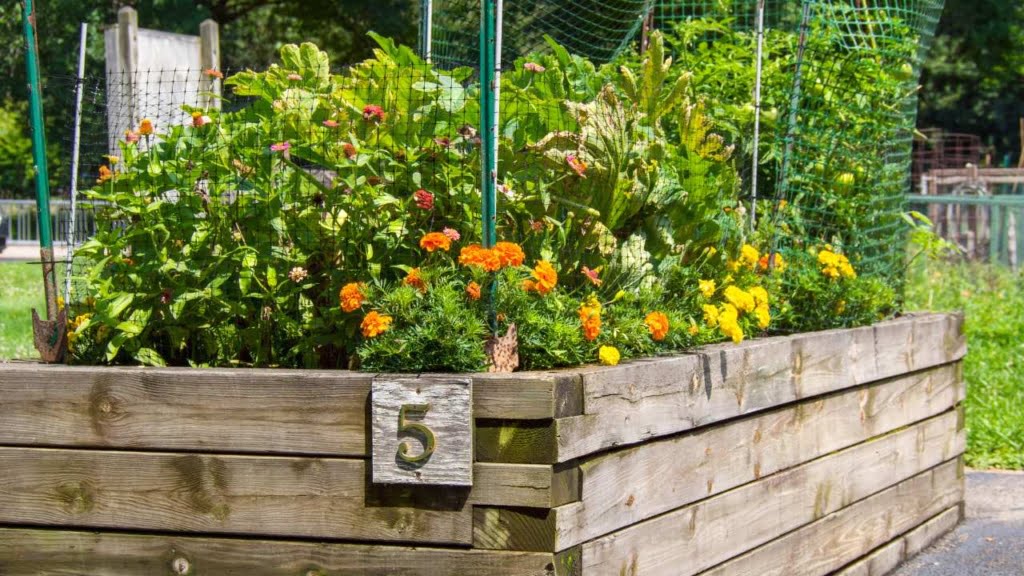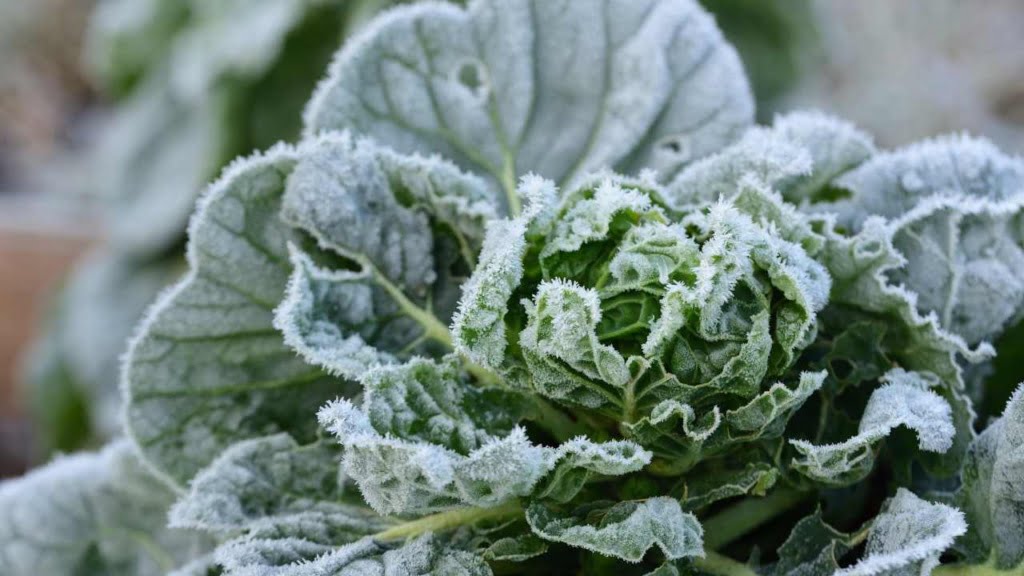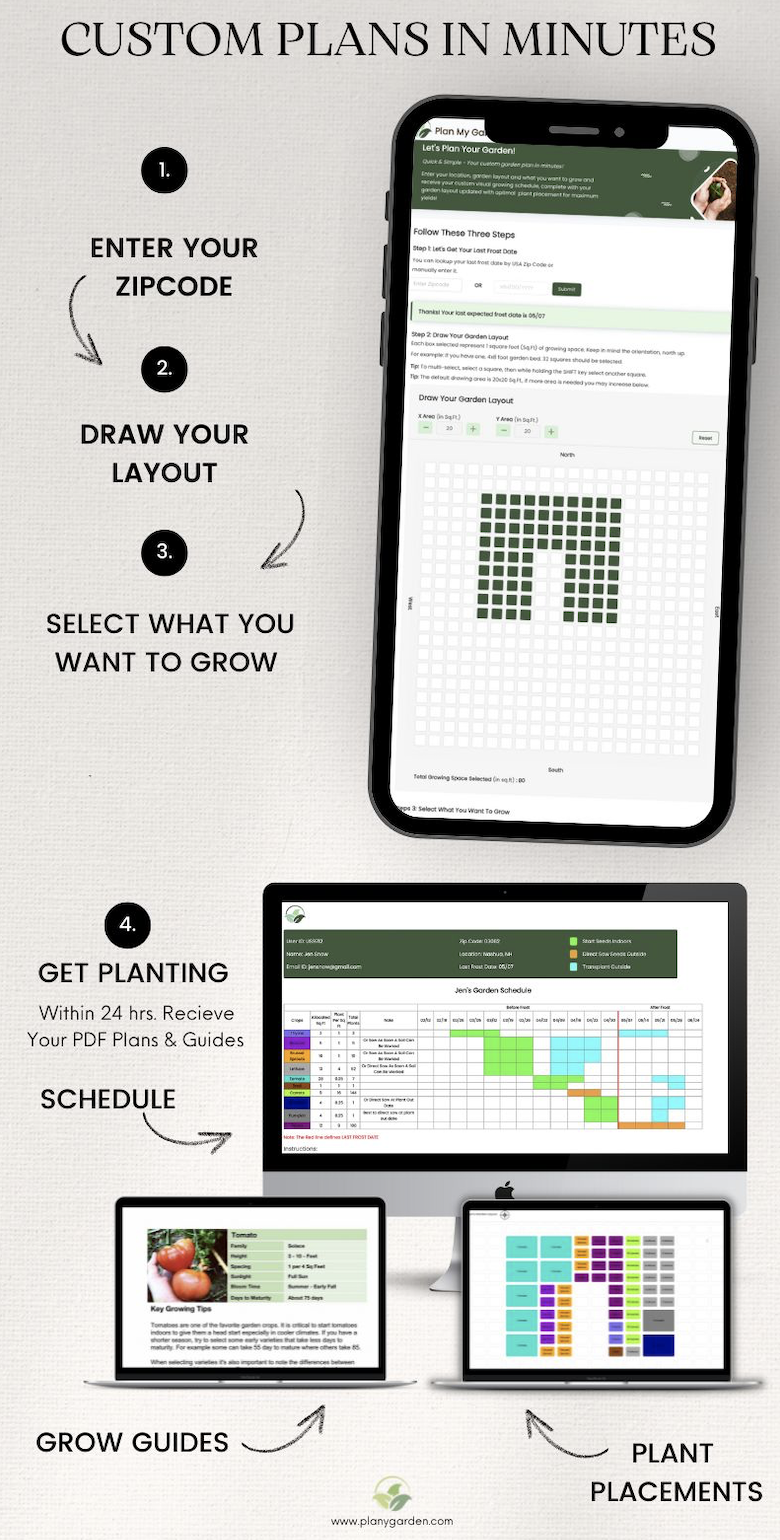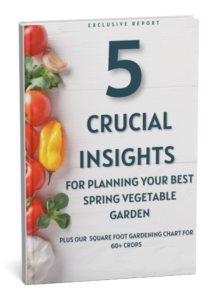Last Updated on January 4, 2024
Timing is Everything: When to Start Planting Your Vegetable Garden for Optimal Growth
Are you ready to dive into the world of vegetable gardening? Timing is everything when it comes to starting your own garden, and knowing when to plant can make a significant difference in the success of your crops. Whether you’re a seasoned gardener or a beginner looking to try your hand at growing your own food, understanding the optimal timing for planting vegetables is key. In this article, we will explore when is the best time to plant a vegetable garden, the best times to start planting various vegetables, taking into consideration factors such as climate, soil conditions, and plant preferences. From the early spring greens to the late summer harvest, we’ll guide you through the seasons, ensuring that you have the knowledge and confidence to grow healthy and bountiful vegetables all year round. So, grab your gardening gloves and let’s dig in to discover the secrets of perfect timing for your vegetable garden!
Importance of timing in vegetable gardening
When it comes to vegetable gardening, timing is crucial. When is the best time to plant a vegetable garden? Planting at the right time ensures that your plants have the best chance of thriving and producing a bountiful harvest. Timing affects every aspect of your garden, from seed germination to fruit ripening. It determines when you can expect to see the first sprouts, when you can start harvesting, and even how long your growing season will last. By understanding the optimal planting times for different vegetables, you can maximize your garden’s productivity and ensure that your plants have the best chance of success.
One of the main reasons why timing is so important in vegetable gardening is because different plants have different temperature requirements. Some vegetables, such as lettuce and spinach, prefer cooler temperatures and can withstand light frosts, while others, like tomatoes and peppers, thrive in warm weather and will suffer if exposed to cold temperatures. By planting at the right time, you can provide your plants with the ideal growing conditions, allowing them to develop strong roots, healthy foliage, and abundant fruits or vegetables. Additionally, planting at the right time can help you avoid common problems such as bolting, which occurs when plants prematurely produce flowers and seeds due to stress from high temperatures or long days.
Another reason why timing is crucial in vegetable gardening is because it allows you to take advantage of the natural cycles and rhythms of nature. By aligning your planting schedule with the seasons, you can harness the power of Mother Nature to support the growth and development of your plants. For example, starting seeds indoors in late winter allows you to give your plants a head start before the last frost date in your area. Planting cool-season crops in the early spring takes advantage of the cool, moist conditions that are optimal for their growth. And sowing fall vegetables in late summer allows them to mature before the first frost, ensuring a late-season harvest. By understanding the natural rhythms of the growing season and planting at the right time, you can work in harmony with nature to create a thriving vegetable garden.
Understanding your hardiness zone
Before we dive into the optimal planting times for different vegetables, it’s important to understand your hardiness zone. Hardiness zones, also known as planting zones or climate zones, are regions that have similar climatic conditions. They are based on the average annual minimum temperature and help gardeners determine which plants are most likely to thrive in their area. By knowing your hardiness zone, you can choose plants that are well-adapted to your climate and ensure that you’re planting at the right time.
The United States Department of Agriculture (USDA) has developed a hardiness zone map that divides the country into 13 zones, ranging from Zone 1 (coldest) to Zone 13 (warmest). Each zone is further divided into subzones, based on the average annual minimum temperature. To find out your hardiness zone, you can visit the USDA’s website and enter your zip code or consult a local gardening resource. Once you know your hardiness zone, you can use it as a guide to determine the best planting times for different vegetables in your area.
Factors to consider when determining planting time
While hardiness zones provide a general guideline for planting, climate and last expected frost dates are excellent indicators, especially for regions with microclimates. Knowing your last expected frost date is crucial as it helps you plan the best planting times for different vegetables. Additionally, having your garden plan finalized at least 12 weeks before the last expected frost is essential. This allows for timely preparation, especially for vegetables like onions that may need to be started indoors. To find your last expected frost date, you can use our PlanMyGarden tool to enter your zipcode, this will give you your last expected spring frost date.
Plan My Garden is a custom service we developed to make vegetable gardening a breeze. No need to worry about complicated calculations or guesswork. With our user-friendly platform, you only need to enter your location, garden layout, desired crops, and quantities. We take care of the rest!
We optimize custom schedules based on your last expected frost date, ensuring you plant at the optimal time for your location. Plus, our custom PDF plans include your updated layouts with optimal plant spacing and positioning, as well as detailed grow guides and getting started guides. Everything you need for a successful and rewarding gardening journey is just a few clicks away with Plan My Garden.
Early spring vegetables and their optimal planting time
As the winter frost starts to thaw and the days grow longer, it’s time to start thinking about planting your early spring vegetables. These are the cool-season crops that can withstand light frosts and prefer cooler temperatures. By starting these vegetables early, you can take advantage of the cool, moist conditions of the early spring and enjoy an early harvest. Here are some popular early spring vegetables and their optimal planting times:
1. Lettuce: Lettuce is one of the easiest and fastest-growing vegetables to grow. It prefers cooler temperatures and can tolerate light frosts. Sow lettuce seeds directly in the garden as soon as the soil can be worked in the early spring. You can also start lettuce seeds indoors 4 to 6 weeks before the last frost date and transplant the seedlings outdoors once the soil has warmed up.
2. Spinach: Spinach is another cool-season vegetable that thrives in the early spring. It prefers cooler temperatures and can tolerate light frosts. Sow spinach seeds directly in the garden as soon as the soil can be worked in the early spring. You can also start spinach seeds indoors 4 to 6 weeks before the last frost date and transplant the seedlings outdoors once the soil has warmed up.
3. Peas: Peas are a delicious and nutritious early spring vegetable. They prefer cooler temperatures and can tolerate light frosts. Sow pea seeds directly in the garden as soon as the soil can be worked in the early spring.
By planting these early spring vegetables at the right time, you can enjoy a fresh and healthy harvest before the summer heat sets in.

Late spring and summer vegetables and their optimal planting time
As the days get warmer and the threat of frost diminishes, it’s time to start planting your late spring and summer vegetables. These vegetables thrive in warm weather and require longer days to mature. By starting these vegetables at the right time, you can take advantage of the long growing season and enjoy a bountiful harvest throughout the summer. Here are some popular late spring and summer vegetables and their optimal planting times:
1. Tomatoes: Tomatoes are one of the most popular garden vegetables and thrive in warm weather. Start tomato seeds indoors 6 to 8 weeks before the last frost date in your area. Transplant the seedlings outdoors once all danger of frost has passed and the soil has warmed up. Alternatively, you can purchase tomato transplants from a local nursery and plant them directly in the garden.
2. Peppers: Peppers are another warm-season vegetable that requires longer days to mature. Start pepper seeds indoors 8 to 10 weeks before the last frost date in your area. Transplant the seedlings outdoors once all danger of frost has passed and the soil has warmed up. Alternatively, you can purchase pepper transplants from a local nursery and plant them directly in the garden.
3. Cucumbers: Cucumbers are a refreshing and easy-to-grow vegetable that thrives in warm weather. Sow cucumber seeds directly in the garden once all danger of frost has passed and the soil has warmed up. Plant them in a sunny spot and provide them with support or trellis to climb on.
By planting these late spring and summer vegetables at the right time, you can enjoy a plentiful harvest throughout the summer months.

When is the best time to plant a vegetable garden in the Fall?
When is the best time to plant a vegetable garden in the fall? As the summer heat starts to subside and the days grow shorter, it’s time to start planting your fall vegetables. These vegetables are cool-season crops that can withstand light frosts and prefer cooler temperatures. By planting them in late summer or early fall, you can extend your growing season and enjoy a late-season harvest. Here are some popular fall vegetables and their optimal planting times:
1. Carrots: Carrots are a versatile and nutritious root vegetable that thrives in cool weather. Sow carrot seeds directly in the garden in late summer or early fall, about 10 to 12 weeks before the first frost date in your area. Make sure to provide them with loose, well-drained soil to allow for proper root development.
2. Radishes: Radishes are a fast-growing and easy-to-grow vegetable that adds a pop of color to your fall garden. Sow radish seeds directly in the garden in late summer or early fall, about 4 to 6 weeks before the first frost date in your area. They can be harvested in as little as 3 to 4 weeks, making them a great choice for impatient gardeners.
3. Kale: Kale is a nutrient-dense leafy green that thrives in cool weather. Sow kale seeds directly in the garden in late summer or early fall, about 6 to 8 weeks before the first frost date in your area. You can also start kale seeds indoors and transplant the seedlings outdoors once they are well-established.
By planting these fall vegetables at the right time, you can enjoy a fresh and healthy harvest well into the fall.

Tips for successful planting and timing
To ensure successful planting and timing in your vegetable garden, here are some additional tips to keep in mind:
1. Keep a gardening journal: Keeping a gardening journal can help you track planting dates, record observations, and learn from your successes and failures. Note down the planting dates for different vegetables, as well as any specific conditions or treatments that you used. This will help you refine your planting schedule and improve your gardening skills over time.
2. Monitor soil temperature: In addition to air temperature, it’s important to monitor soil temperature when determining the optimal planting time. Many vegetables have specific soil temperature requirements for germination and growth. Use a soil thermometer to measure the temperature at root level and ensure that it falls within the optimal range for your crops.
3. Protect your plants: While timing is important, it’s also crucial to protect your plants from unexpected weather events. Be prepared to cover your plants with row covers or cloches in case of late frosts or unexpected cold snaps. This will help protect your plants and ensure that they continue to grow and thrive.
By following these tips and guidelines, you can ensure successful planting and timing in your vegetable garden and enjoy a bountiful harvest throughout the year.
Tools and resources for tracking planting dates
When to start planning your vegetable garden can be a crucial factor in achieving a successful harvest. Keeping track of planting dates and managing your garden schedule can be challenging, especially if you’re growing multiple crops and varieties. Fortunately, at Plan My Garden, we’ve developed a powerful garden planning tool that can simplify the process for you.
With Plan My Garden planning app, all you need to do is enter your location, garden layout, desired crops, and quantities. We take care of the rest, providing you with custom PDF plans to your email that include:
- Custom Schedule: Optimal planting times based on your location and crops for a successful harvest.
- Layout Optimization: Smart plant spacing and positioning for maximum yield and healthy growth.
- Grow Guides: Step-by-step instructions for each selected vegetable to help you throughout the growing season.
- Getting Started Guides: Essential tips and advice to kickstart your gardening journey.
With Plan My Garden, you’ll have everything you need to create a thriving vegetable garden right at your fingertips and won’t have to ask when is the best time to plant a vegetable garden. Start planning today for a season of abundant and rewarding harvests!
Need help planning your square-foot garden? No problem – we’re here to help.
Ready to plan your square-foot garden in minutes? With our easy-to-use tool, you can enter your zip code, draw your layout, and choose the plants you want to grow. We’ll send you a custom visual schedule, getting started guide, and plant layout specifically tailored to your square foot garden. Plus, you’ll receive a growing guide for each vegetable to help you get the most out of your garden. Don’t wait – get your custom square-foot garden plan today and start growing!
Gardening Just Got Better with Our Mailing List
Join our mailing list and get access to exclusive gardening tips and much more. Our emails are full of helpful information that will help you get the most out of your garden. Don’t miss out – join our mailing list today!
FAQ
A: The timing for planting your vegetable garden depends on your location and the specific crops you want to grow. Generally, you can start planting cool-season crops like lettuce and peas in early spring, while warm-season crops like tomatoes and peppers are best planted after the last frost date in your area.
A: You can find your last frost date by entering your zipcode in the PlanMyGarden tool here.
A: Cool-season crops, such as broccoli and spinach, prefer cooler temperatures and can tolerate light frosts. Warm-season crops, like cucumbers and beans, thrive in warmer temperatures and are sensitive to frost.
A: Yes, you can start some vegetables indoors before the last frost date to get a head start on the growing season. This method is particularly beneficial for crops that require a longer growing season, like tomatoes and peppers.
A: If you miss the recommended planting window, you can try planting a quick-maturing variety or consider planting a different crop that is suitable for the current season.
A: To protect your plants from late frosts, you can use protective covers like cloths or plastic sheets, or consider using cold frames or row covers for added protection.
A: The use of moon phases for planting is a personal choice, and there is no scientific evidence supporting its effectiveness. Some gardeners find it beneficial, while others prefer to follow standard planting schedules based on frost dates and local climate. We recommend using the recommendations based on the Plan My Garden schedule which is based on historical data for your exact location.


